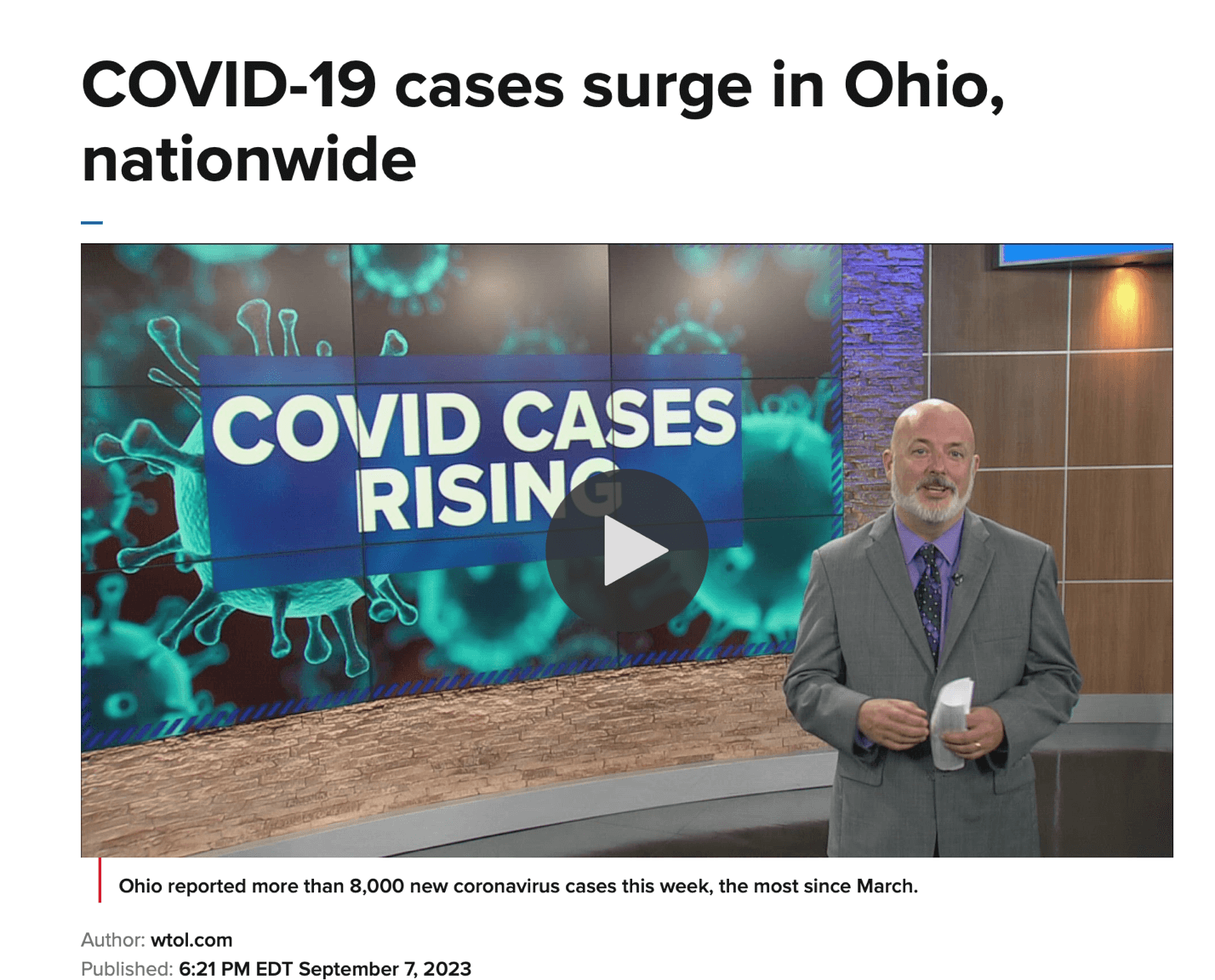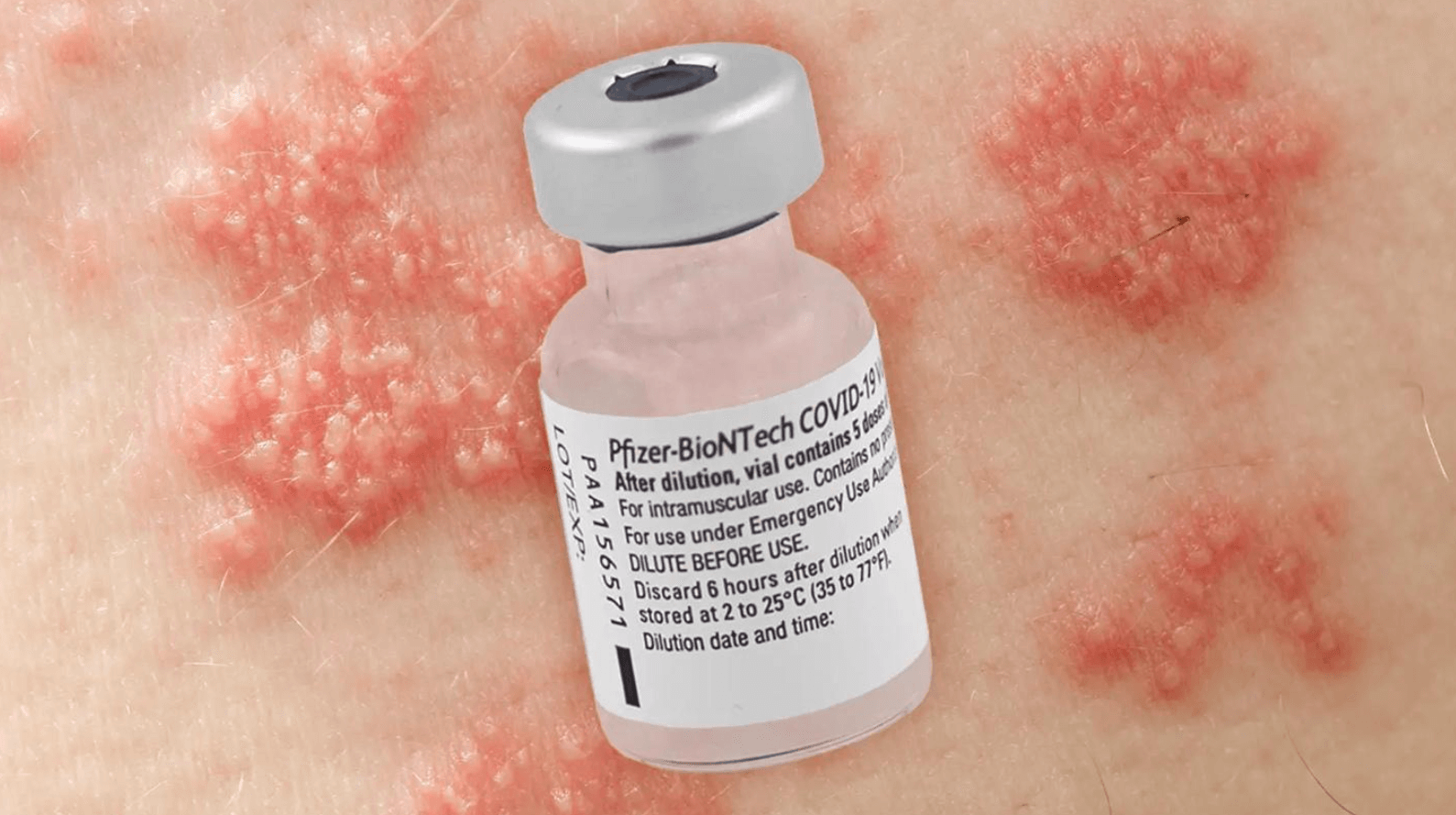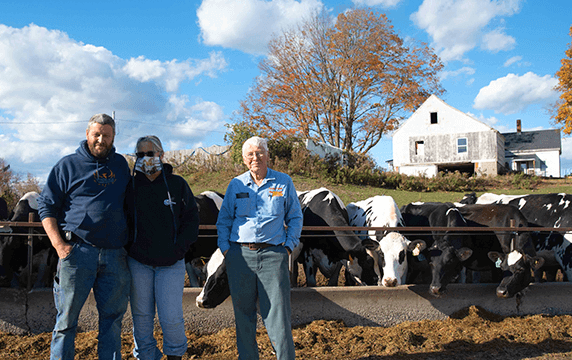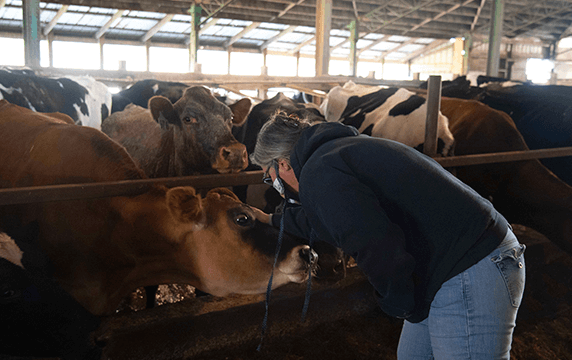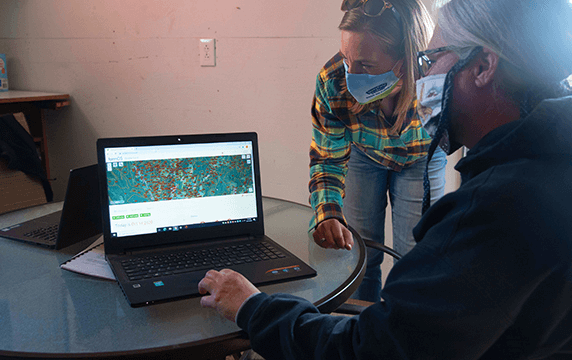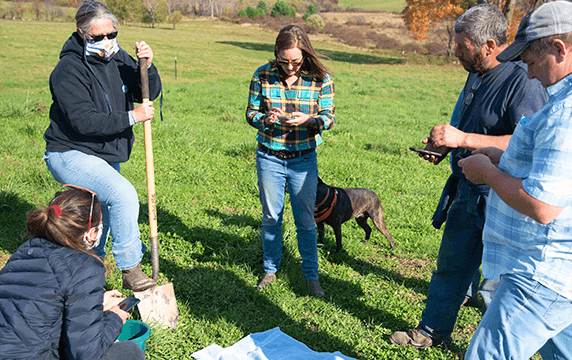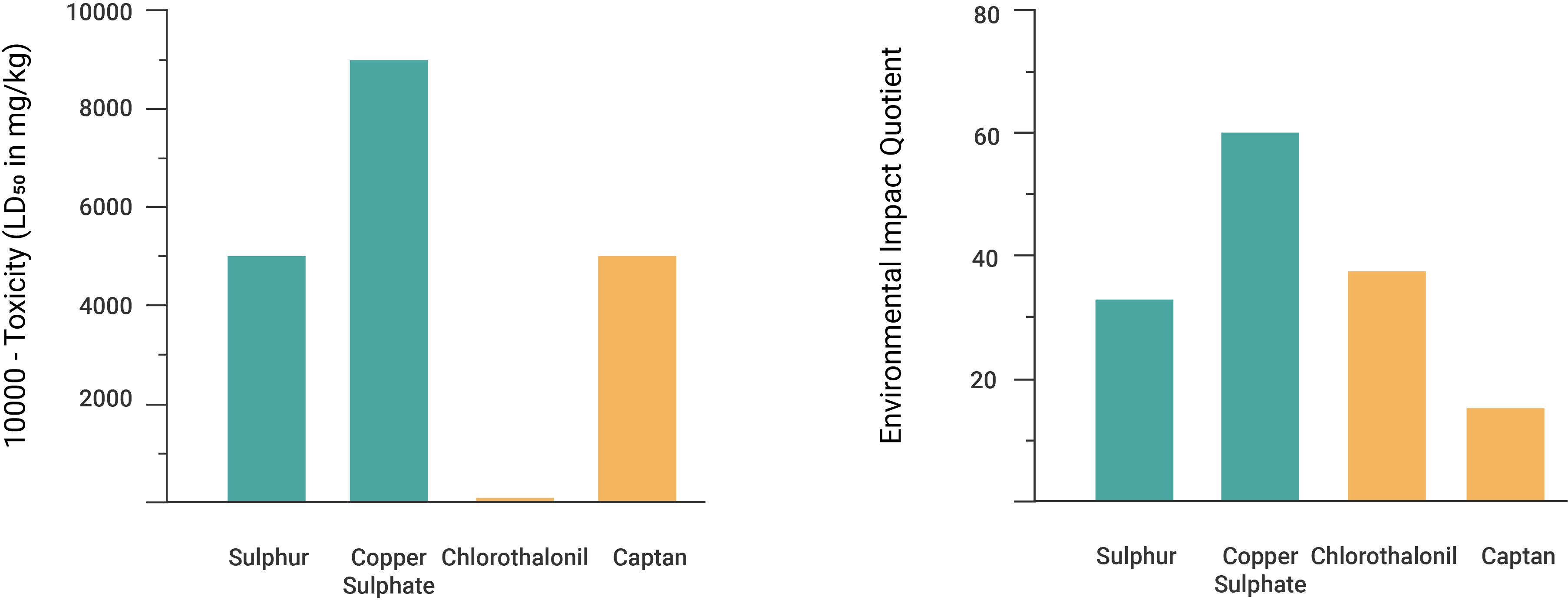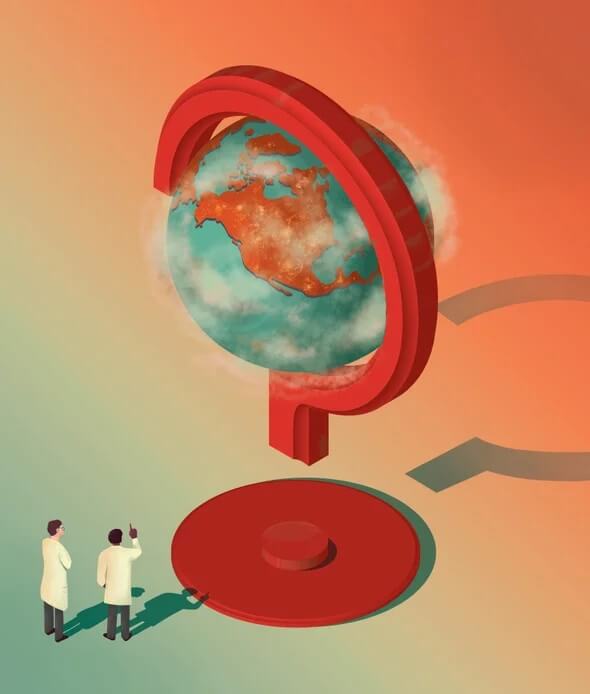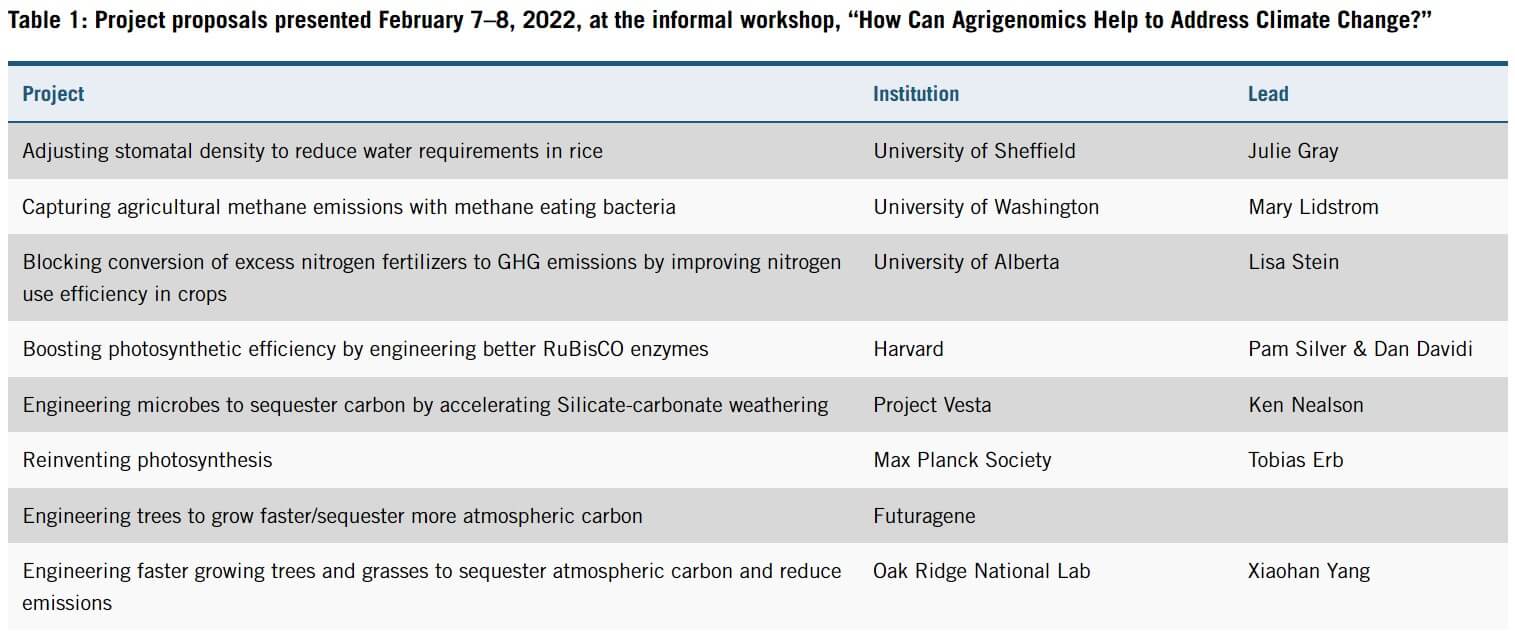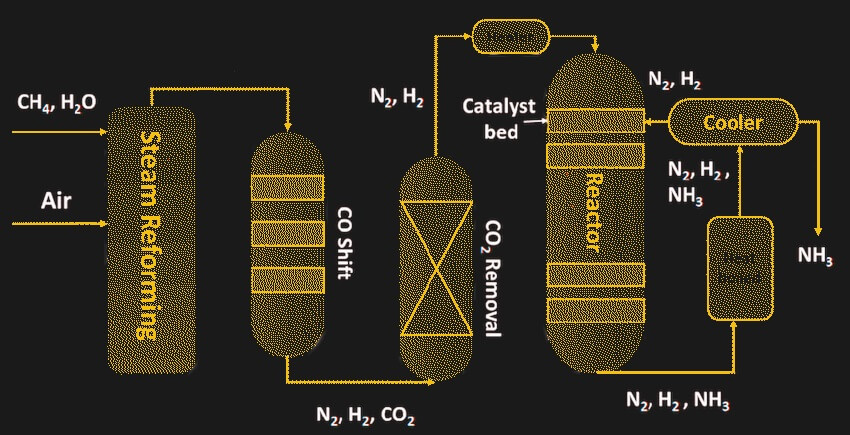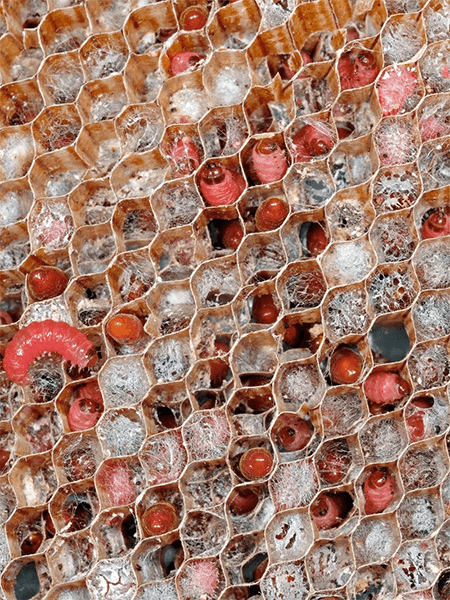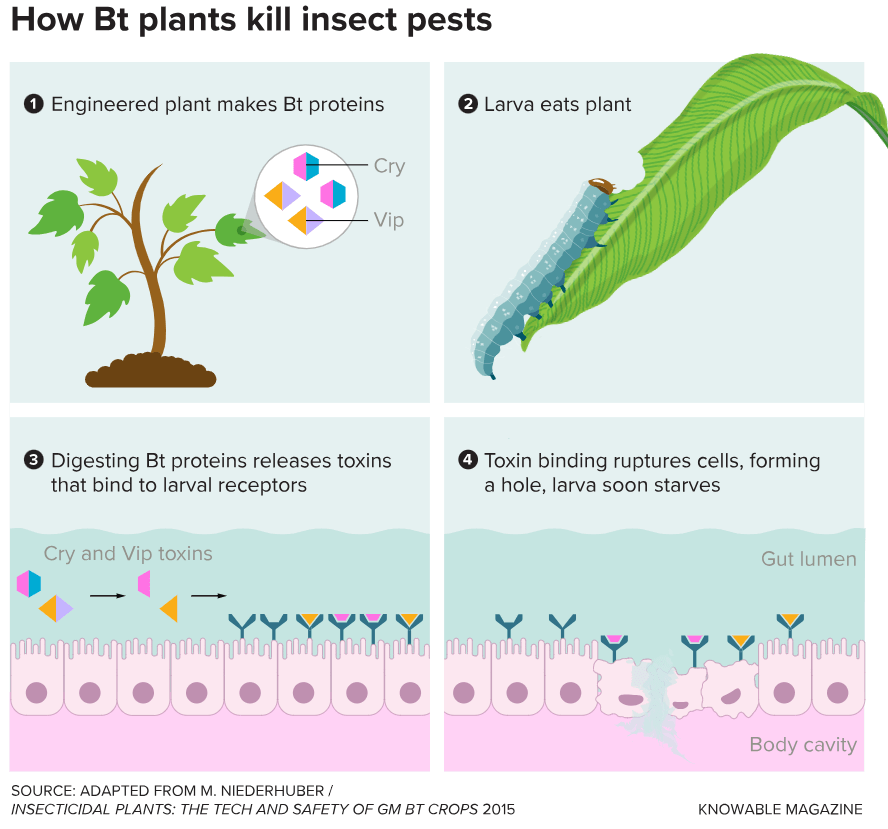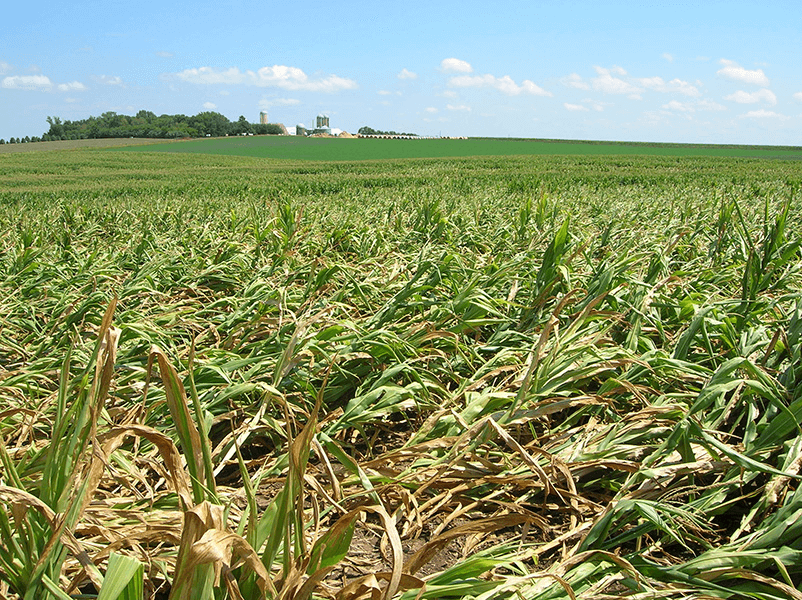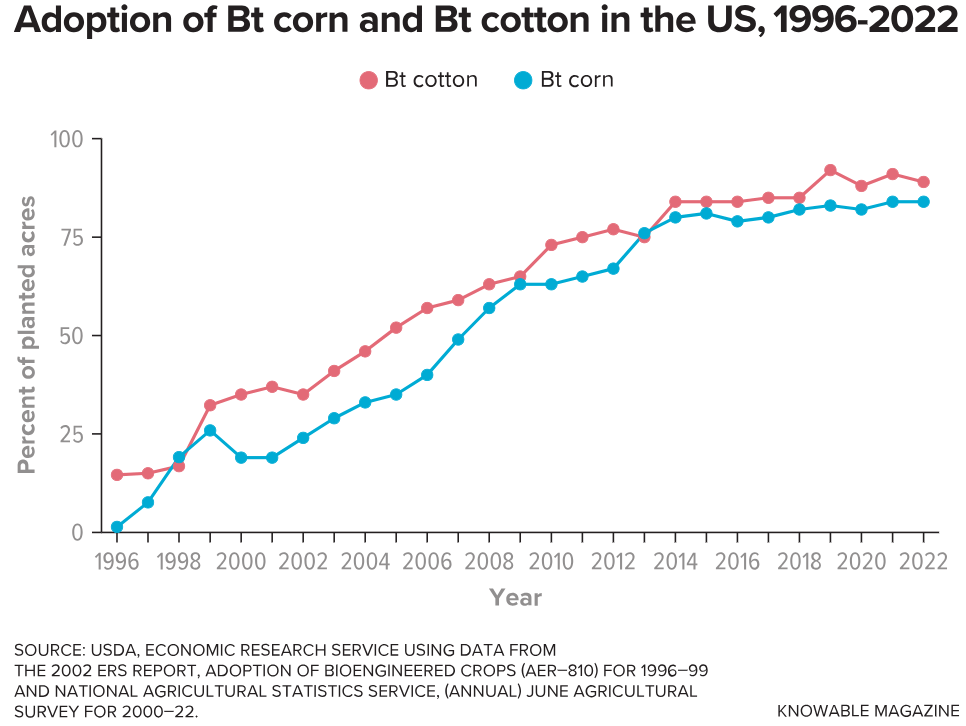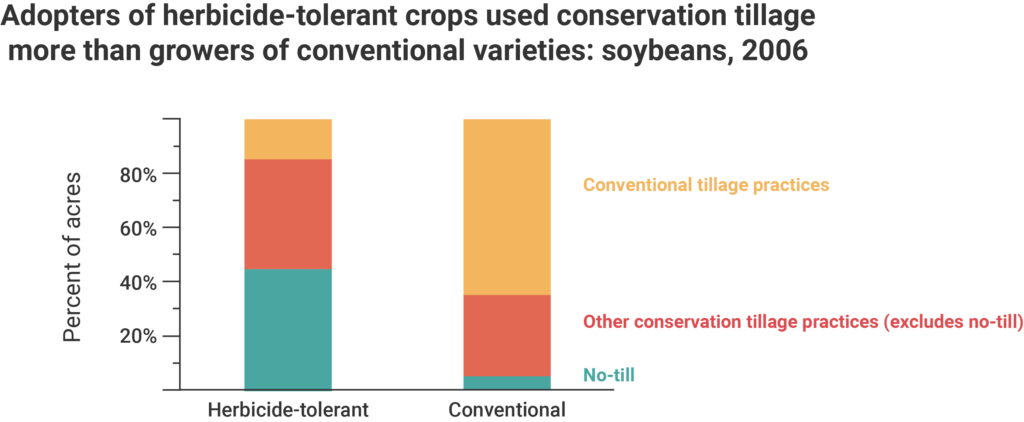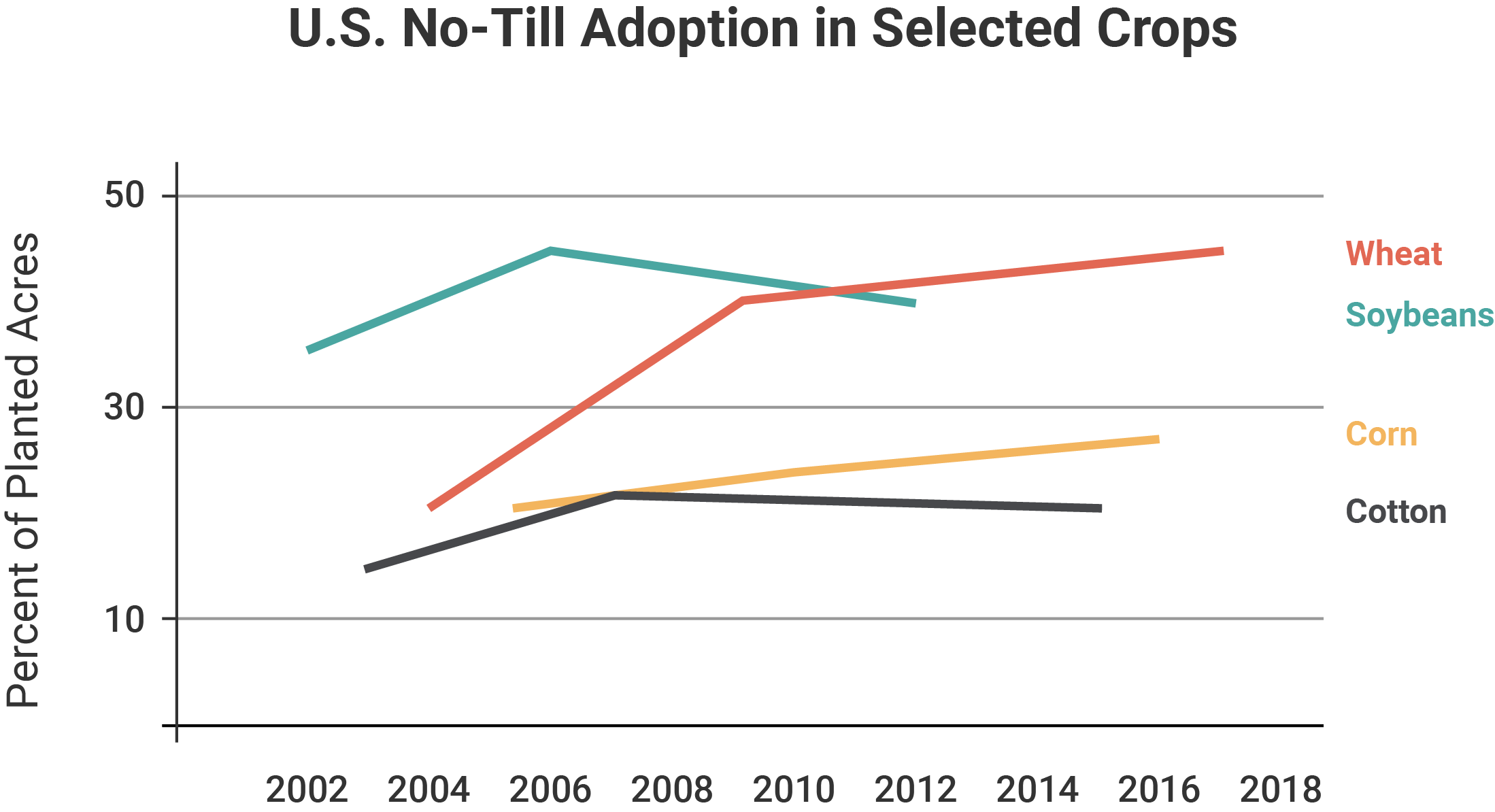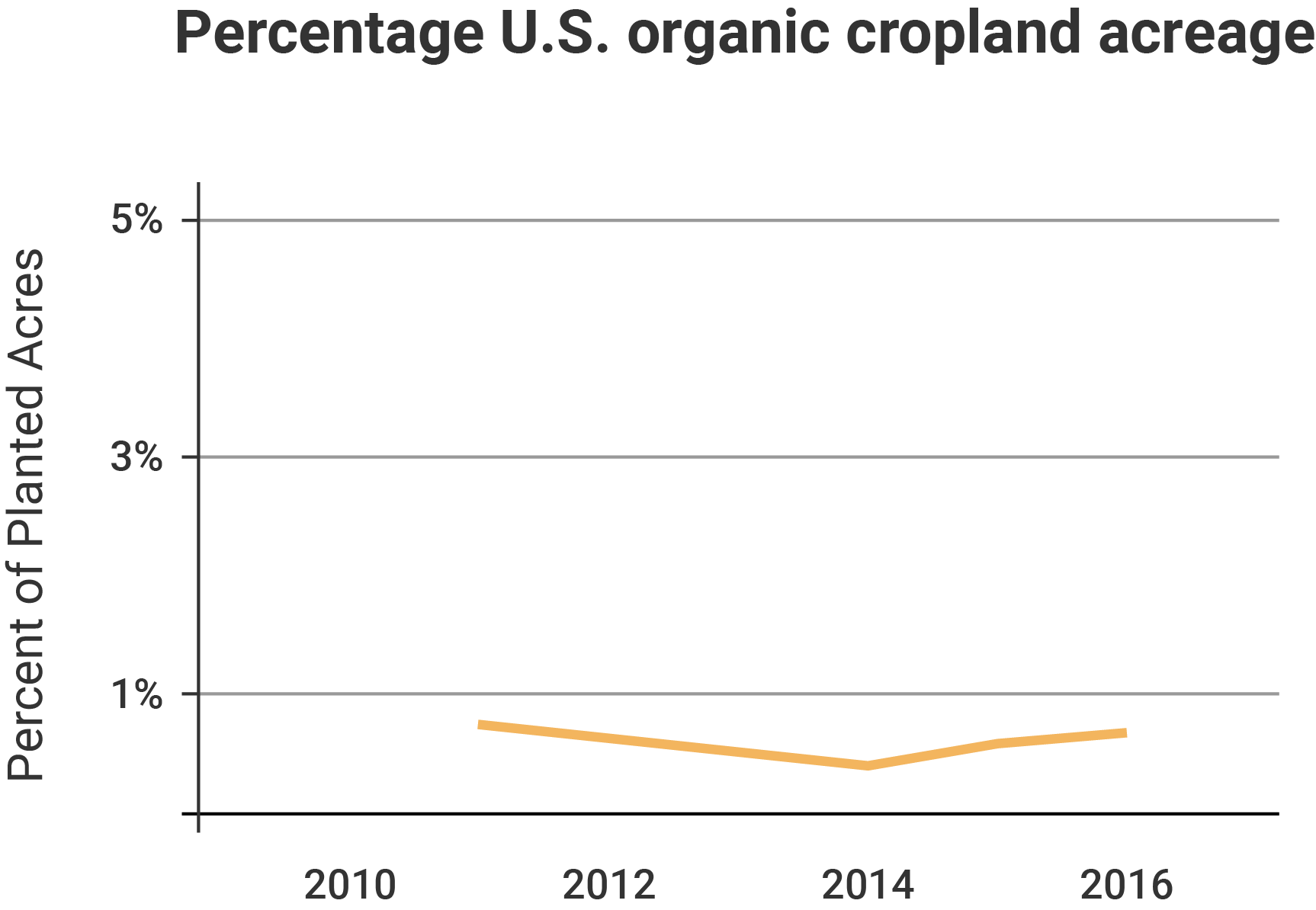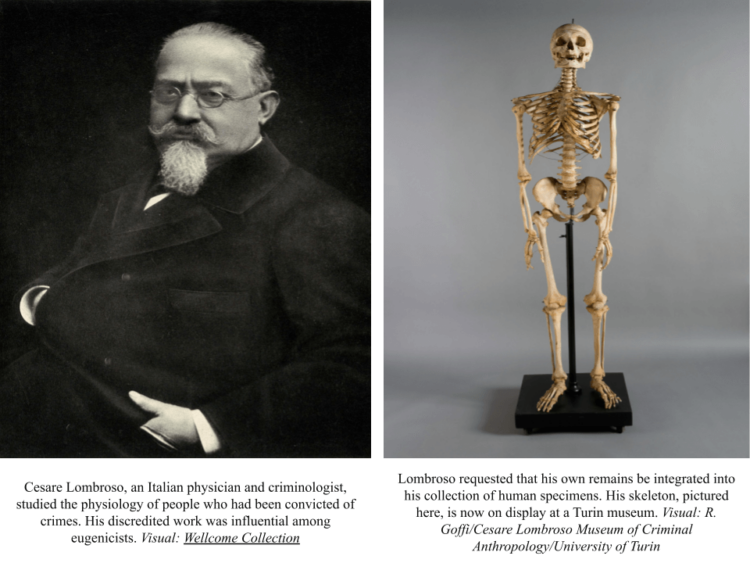Charles “Chuck” Benbrook (born 1949) is an organic industry consultant and paid “expert witness”[1] on pesticide and GMO-related lawsuits,[2]. According to the New York Times, he receives considerable funding from the organic industry. He is trained as an agricultural economist. He has a PhD in agricultural economics from the University of Wisconsin-Madison and an undergraduate degree from Harvard University.
Benbrook has a long history of being dismissed from jobs because of his perceived biases. Over the years, he lost positions at the National Resource Council, Washington State University, and most recently the Heartland Research Alliance After his separation in mid-2023 as founding director of HRA, he resumed his work as a full-time tort legal consultant focusing on agricultural chemicals. His ties to the ‘predators’ industry stretch back to 2011, according to Wikipedia. By then, he had already served as an expert witness in more than a dozen lawsuits involving GMOs and pesticides.
Since 2014 Benbrook has been a paid litigation consultant for numerous mass tort pesticide cases including those targeting glyphosate, He has worked as a consultant and expert witness for Baum Hedlund (renamed Wisner Baum), the Church of Scientology law firm that was the lead plaintiff lawyers for the first three cases targeting Monsanto’s glyphosate herbicide. His critical evaluations of glyphosate are regularly posted on Environmental Health News, a media site notorious among scientists as a repository for politicized attacks on chemicals, sometimes written by scientists, such as Benbrook, funded by organic companies and predatory lawyers — without the author or the EHN disclosing those links.
Benbrook has developed proprietary analytical systems he uses to quantify food quality and safety, and the impacts of agricultural technology and policy. He has re-analyzed government reports for public groups and for organic organizations known for anti-biotechnology lobbying to suggest that there are high risks associated with GMOs, pesticide use and residue levels, and often charges for those services. He is often quoted by mainstream news sources (like The New York Times, with at least 30 references) promoting organic agriculture and aggressively opposing GMOs, pesticides and other conventional agricultural tools. He claims that GMO crop use has “backfired” and results in unsustainable massive pesticide use, that organic crops have equivalent or better yields than conventional and GMO counterparts, and that organic food is safer and more nutritious.
Benbrook is the former research director of the organic industry-funded group The Organic Center. He also was affiliated with Washington State University as an adjunct “research professor”, but left WSU in 2015 following disclosures that 100 percent of his activities were funded by the organic industry. Benbrook also is board secretary for the Environmental Working Group‘s political action committee. He has served as a ‘visiting scholar’ at the Bloomberg School of Public Health at Johns Hopkins University since 2017, and spent two years affiliated with Newcastle University in the UK, ending in 2017. Neither is a research position.
Organic Industry Ties
Benbrook emerged as a spokesperson for organic farming during his tenure as a research director of The Organic Center from 2016-2012. The Center, which is funded by the organic industry, is part of the Organic Trade Association, and has been very critical of crop biotechnology. From 2012-2015, he affiliated with the Center for Sustaining Agriculture and Natural Resources (CSANR) at Washington State University (WSU). He held an adjunct faculty position in the Crop and Soil Sciences Department, funded entirely by the organic industry. It ended on May 15, 2015, when his contract was not extended amidst charges that he was misrepresenting and downplaying his organic industry links (see below).
After he was severed from WSU, Benbrook continued to represent himself as a “research professor at Washington State.” Reporter Carey Gillam (then with Reuters and more recently an editor with the anti-GMO organic funded advocacy group US Right to Know), referred to him as a “research professor” when writing about a commentary highly critical of GMOs co-written by Benbrook in the New England Journal of Medicine. A controversy developed after the NEJM article appeared, because Benbrook publicly maintained, including in COI statements to the NEJM, that he had no conflicts of interests despite extensive documentation that his research at WSU was 100 percent funded by the organic industry (not disclosed to NEJM, see below, Misrepresentations, for an analysis of Benbrook’s claims about his employment situation and in Conflict of Interest representations to NEJM) and that he was (and remains) a paid consultant for organic industry lobby groups and anti-GMO organizations.
In 2015, The New York Times released a trove of Benbrook’s emails secured in a FOIA request documenting his organic industry funding and his close ties to anti-GMO activists and journalists. A separate FOIA led to the release of more of Benbrook’s emails, available here, which reaffirmed his close ties to the organic industry that has bankrolled him since his affiliation with the Organic Center. It includes emails in which asks organizations for financial support in exchange for producing ‘research on request’ tailored to their editorial needs. The emails also reveal that Benbrook and other anti-GMO campaigners worked hand-in-hand with GMO labeling lobbyists, and two prominent journalists critical of GMOs, Michael Pollan and Mother Jones’ Tom Philpott. The email trail suggest both journalists coordinated their article strategies and internet outreach with Benbrook and anti-GMO environmental advocacy groups, including some alternative health providers.
Heartland Research Alliance
In 2018, Benbrook was named the founding director of the organic-funded Heartland Research Alliance, which works closely with tort lawyers targeting agricultural chemicals such as glyphosate. He immediately launched the Heartland Study; its purpose, in his words, is to study “how food and farming impacts the health of people and the planet”. HHRA partnered with various universities and hospital systems to conduct correlation (but not causation) studies “linking” herbicides, particularly glyphosate, to cancers and other health risks [3]:
The Heartland Study claims it is a hospital-based research project designed to find out whether rising herbicide use is putting Midwestern moms and babies — and perhaps even future generations — at risk.
The study targets the herbicides glyphosate, dicamba, and 2,4-D, but also atrazine, neonicotinoids and other active crop chemical ingredients. The project lists a roster of chemical class action litigation-paid consultants, known for the anti-pesticide, endocrine-disruption chemical risk promoting research as partners, including: Philip Landrigan of Boston College, Melissa Perry of George Washington University, Paul Winchester of Indiana University, Fiorella Belpoggi of the Ramazzini Institute, Michelle Perro of GMO Science Alpha, Michael Hansen of Consumers Union, Michael Antoniou of Kings College London, Robin Mesnage (a litigation consultant), John Fagan of Maharishi Movement and HRI Testing Labs, and Bruce Lanphear of Simon Fraser University.
These studies became the foundation for class action lawsuits by the Church of Scientology’s law firm, then named Baum Hedlund, and other predatory law firms. In addition to funding HHRA, Benbrook and his family reported receiving more than $500,000 in fees from mass tort lawyers while coordinating these studies.
HHRA’s donors and board members include plaintiffs’ litigators and their paid expert witnesses. According to a 2019 post on its website that was removed but recovered with Wayback Machine, HHRA received donations from both RFK, Jr. and Michael Baum of Baum Hedlund. Most of its larger donations are disguised as “anonymous.”
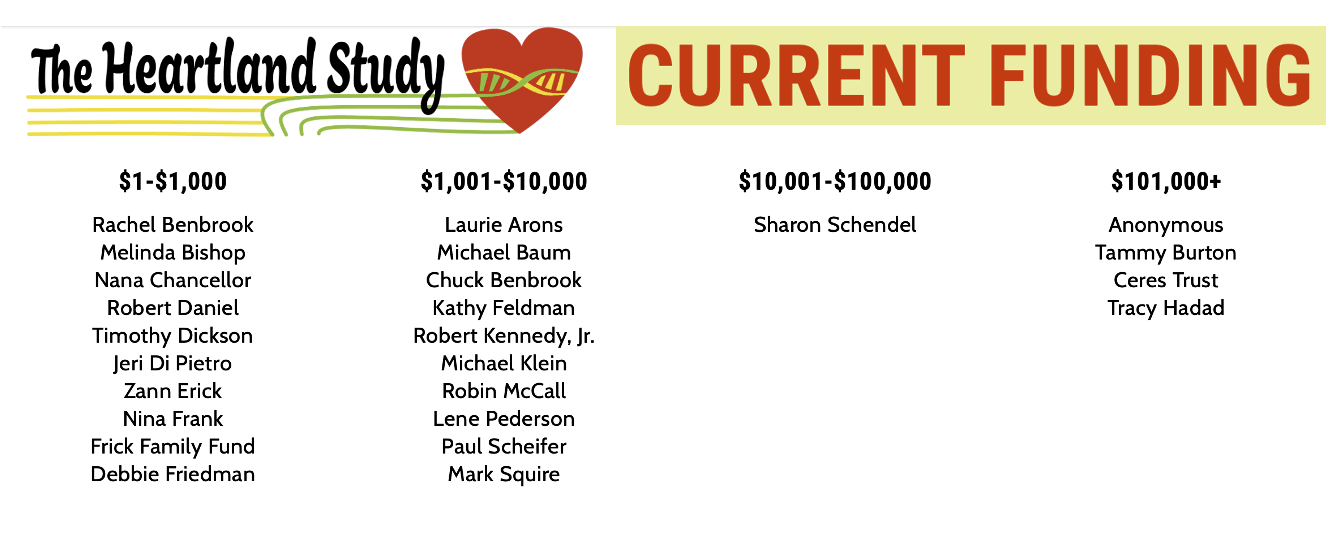 In addition to funding HHRA, Benbrook and his family reported receiving more than $500,000 in fees from mass tort lawyers while coordinating these studies.
In addition to funding HHRA, Benbrook and his family reported receiving more than $500,000 in fees from mass tort lawyers while coordinating these studies.
Benbrook resigned from Heartland in July 2023. According to his resignation letter posted on the organization’s site, he left because, “my service as the HHRA ED has proven to be incompatible with my work as a testifying expert in hotly contested pesticide litigation.” Benbrook’s resignation letter was soon stripped from Heartland’s web page but is preserved here.
Much of the money raised by Heartland and similar groups goes directly or indirectly to environmental advocacy groups known for taking activist positions on chemicals and risk. Environmental Working Group’s political lobbying “Action Fund” is supported by the American Association for Justice, formerly the Association of Trial Lawyers of America, to promote mesothelioma health risk claims linked to class actions being filed by the donors’ trial lawyer members.
Controversial Research
Benbrook’s most controversial study, published in 2012 in a predatory pay-for-play journal, concluded that genetically modified foods had “backfired,” because weeds had begun developing resistance to glyphosate, resulting in massive increases in herbicide use[4]. He claimed that organic crops have equivalent or better yields than conventional and GMO counterparts and that organic foods are safer and more nutritious. The article led to many thousands of web posts and articles claiming that the use of glyphosate with GMO crops uniquely led to ‘super weeds’ as they adapted over time to the herbicide.
The research was widely criticized in the mainstream science community. Benbrook used subjective estimates of herbicide usage by relying on data he interpreted from the US National Agricultural Statistics Service, which didn’t differentiate between GM and non-GM crops and did not take into account the fact that glyphosate is less toxic than the herbicides it has replaced. Thus the net toxicity of herbicide use had actually decreased even as total herbicide use trended mildly upward. Graham Brookes of PG Economics published a peer reviewed report that same year that cracked the same data but reached a far different conclusion: GM crops actually reduced worldwide pesticide use by 9.1 per cent. However, the Benbrook study is still widely circulated on anti-GMO websites as fact.
The source of the article also came under fire. It appeared in the organic-industry funded Environmental Sciences Europe, an online journal which often publishes papers not accepted by mainstream peer reviewed journals. It’s a favorite landing spot for papers by organic-funded anti-GMO scientists such as Gilles-Éric Séralini whose notorious studies making unsubstantiated claims about the alleged dangers of GMOs and glyphosate were unpublishable except in fringe publications.
Benbrook has a long history of attacking scientific findings that conflict with his views as either tainted by industry funding or as researchers making “rookie mistakes.” That’s how he characterized the 2012 Stanford University meta-analysis of organic foods that concluded they are no safer or nutritious than conventional counterparts. It’s become a landmark study.
In December 2013, Benbrook was the lead author of a study claiming that organic milk contained significantly higher levels of heart-healthy omega-3 fatty acids. The study was funded in part by the organic milk producer Organic Valley, and was sharply criticized for faulty assumptions and analysis. In July 2014, Benbrook was co-author of a meta-analysis of 343 studies examining the nutritional differences between organic and non-organic food. It concluded that organic food had higher levels of antioxidants and lower levels of cadmium than did conventional food.
Benbrook and co-author epidemiologist and pediatrician Philip Landrigan wrote a commentary in 2015, “GMOS, Herbicides and Public Health,” in the New England Journal of Medicine, calling for a global reconsideration of the safety of plant biotechnology due to their concerns over the impact of herbicides on public health. Landrigan, director of the Children’s Environmental Health Center at Mount Sinai Medical Center, has long maintained that “toxic chemicals” are silently damaging children around the world. The authors based their current argument upon the International Agency for Research on Cancer (IARC)’s controversial classification of glyphosate as a ‘probable’ carcinogen and of 2,4-D as a ‘possible’ carcinogen, along with the Environmental Protection Agency (EPA) decision to approve Enlist Duo, a herbicide comprising glyphosate and 2,4-D designed to be used with herbicide resistant, genetically engineered crops
Independent scientists were sharply critical of the NEJM commentary:
- Dr. Dave Stone, Associate Professor, Department of Environmental and Molecular Toxicology, Oregon State University
While it is important to pursue advances in how we assess and manage risk, it is equally important to avoid representations that use inflammatory language, are devoid of context and cause undue alarm. Unfortunately, the latter is the case with the recent commentary by Landrigan and Benbrook who cite Agent Orange, Monarch butterflies, and endocrine disruption to support labeling of genetically modified foods and distort the risk posed by plant biotechnology.
One of Landrigan’s and Benbrook’s central arguments is that the GMO landscape has changed as a result of the noted increase in herbicide applications to genetically modified (GM) crops. While this increase raises some key issues, such as weed resistance, the commentary suggests implications to consumers and public health that are unwarranted. Whether or not a pesticide is used in conventional or GM crops, the level of acceptable residue on a commodity, known as a tolerance, is set to protect us from harm. Year after year, residues in our food supply have been measured at trace levels that are far below what is required to result in clinically relevant effects.
- Dr. Jeff Wolt, Professor of Agronomy & Toxicology, Biosafety Institute for Genetically Modified Agricultural Products, Iowa State University
In their piece, Landrigan and Benbrook present a laundry list of familiar misperceptions of modern crop production. Through the lens of their perspective, the public gains a distorted view of the safety of biotechnology crops and pesticides; and of the immense contributions of agriculture to public health in the United States by assuring a safe and abundant food supply.
The authors’ statements regarding findings of the NAS 2000 and 2004 reports are misleading both in terms of what these reports state and the progress that is being made.
The IARC findings of glyphosate as a probable carcinogen and 2,4-D as a possible carcinogen signal the need for vigilance concerning their use, but say nothing regarding risk to human health. EPA and other regulatory authorities conduct a more holistic appraisal of pesticides which considers a wider array of toxicity information as well as exposure characterization to arrive at an understanding of risk of the chemicals under actual use conditions. It is these regulatory risk assessments that support the safe use of glyphosate and 2,4-D in agriculture. EPA shows appropriate vigilance in assuring safety of our food supply through periodic reappraisal of pesticides and is currently undertaking just such an assessment for glyphosate.
- Dr. Andrew Kniss, Associate Professor, Department of Plant Sciences, University of Wyoming
Dr. Landrigan and Dr. Benbrook cite glyphosate-resistant weeds as a primary reason why “fields must now be treated with multiple herbicides.” … [G]lyphosate-resistant weeds may certainly have increased the number of herbicides used per acre compared to 5 years ago, but the change has been relatively modest when compared to herbicide use before the adoption of GMO crops.
Dr. Landrigan and Dr. Benbrook also make several misleading statements, including that the Enlist Duo registration decision by EPA “failed to consider ecologic impact, such as effects on the monarch butterfly and other pollinators.” The EPA provides all relevant regulatory decision information on its website, including the environmental risk assessment documents. Just one of the risk assessment documents for Enlist Duo contains over 100 pages of ‘ecologic impact’ data and interpretation, including environmental fate, degradation, aquatic and terrestrial organism toxicity and exposure estimates. The EPA also explicitly addresses how Enlist Duo will affect pollinators on an FAQ page dedicated to the Enlist Duo registration.
Another misleading statement made by Dr. Landrigan and Dr. Benbrook is that the “risk assessment gave little consideration to potential health effects in infants and children, thus contravening federal pesticide law.” This claim was also addressed explicitly by EPA in the FAQ document. EPA concluded that after incorporating a 10X safety factor for children, and based on a “complete and very robust” data set, that the “risks were still acceptable for all age groups for all components of the assessment: dietary food and drinking water exposure, volatility, spray drift, residential, and aggregate assessment.
Misrepresentations on Conflict of Interest?
Both Benbrook and Landrigan may have misrepresented themselves as to whether they any potential conflicts of interest in the writing of the NJM article referenced above. NEJM states that submitting authors are required to report any “relationships or activities that readers could perceive to have influenced, or that give the appearance of potentially influencing, what you wrote in the submitted work.” Benbrook made numerous misrepresentations in his disclosure statement:
Did you or your institution at any time receive payment or services from a third party (government, commercial, private foundation, etc.) for any aspect of the submitted work (including but not limited to grants, data monitoring board, study design, manuscript preparation, statistical analysis, etc.)?
Answer NO
100 percent of Benbrook’s funding at his institution was from organic industry commercial interests, which benefit from disparaging the safety of GMOs and pesticides.
Place a check in the appropriate boxes in the table to indicate whether you have financial relationships (regardless of amount of compensation) with entities as described in the instructions. Use one line for each entity; add as many lines as you need by clicking the “Add +” box. You should report relationships that were present during the 36 months prior to publication.
Answer NO
Benbrook is a consultant to commercial interests, including Whole Foods Market and litigators with current cases pending against GMO and pesticide companies, which claim and profit from claims that GMOs and pesticides are unsafe
Are there other relationships or activities that readers could perceive to have influenced, or that give the appearance of potentially influencing, what you wrote in the submitted work?
Answer NO
Both Benbrook and Landrigan are board members, advisors and/or paid consultants to numerous organic activist groups and organizations. Benbrook was and is a paid consultant to the organic industry, including Whole Foods, and 100% of the funds that supported his since-severed project at Washington Sate University were supplied by the organic industry—according to the disclosure on the WSU website (since removed by WSU but displayed above and available here).
Career
Benbrook is an agricultural economist and organic farming advocate who says he has developed analytical systems to quantify food safety and quality, as well as the impacts of agricultural technology and policy.
- BA, Economics, Harvard University (1971)
- MA, Agricultural Economics, University of Wisconsin (1979)
- PhD, Agricultural Economics, University of Wisconsin (1980)
The first 18 years of his career was spent working in Washington, D.C., first for the Executive Office of the President (1979-1980), then as Executive Director for a U.S. House of Representatives agricultural subcommittee (1981-1983). He was the Executive Director of the National Academy of Sciences Board on Agriculture from 1984-1990, and started his own consulting firm in 1991.
In 1997, Benbrook served as Chief Scientist for The Organic Center from 2004 until June 2012. He then joined CSANR as a “research professor” (see reference for description)[4] in August, 2012. He served as the leader of the program called Measure to Manage (M2M): Farm and Food Diagnostics for Sustainability and Health (M2M). The stated goal of M2M was to develop, refine, validate, and apply analytical systems quantifying the impacts of farming systems, technology, and policy on food nutritional quality, food safety, agricultural productivity, economic performance along food value chains, and on natural resources and the environment.
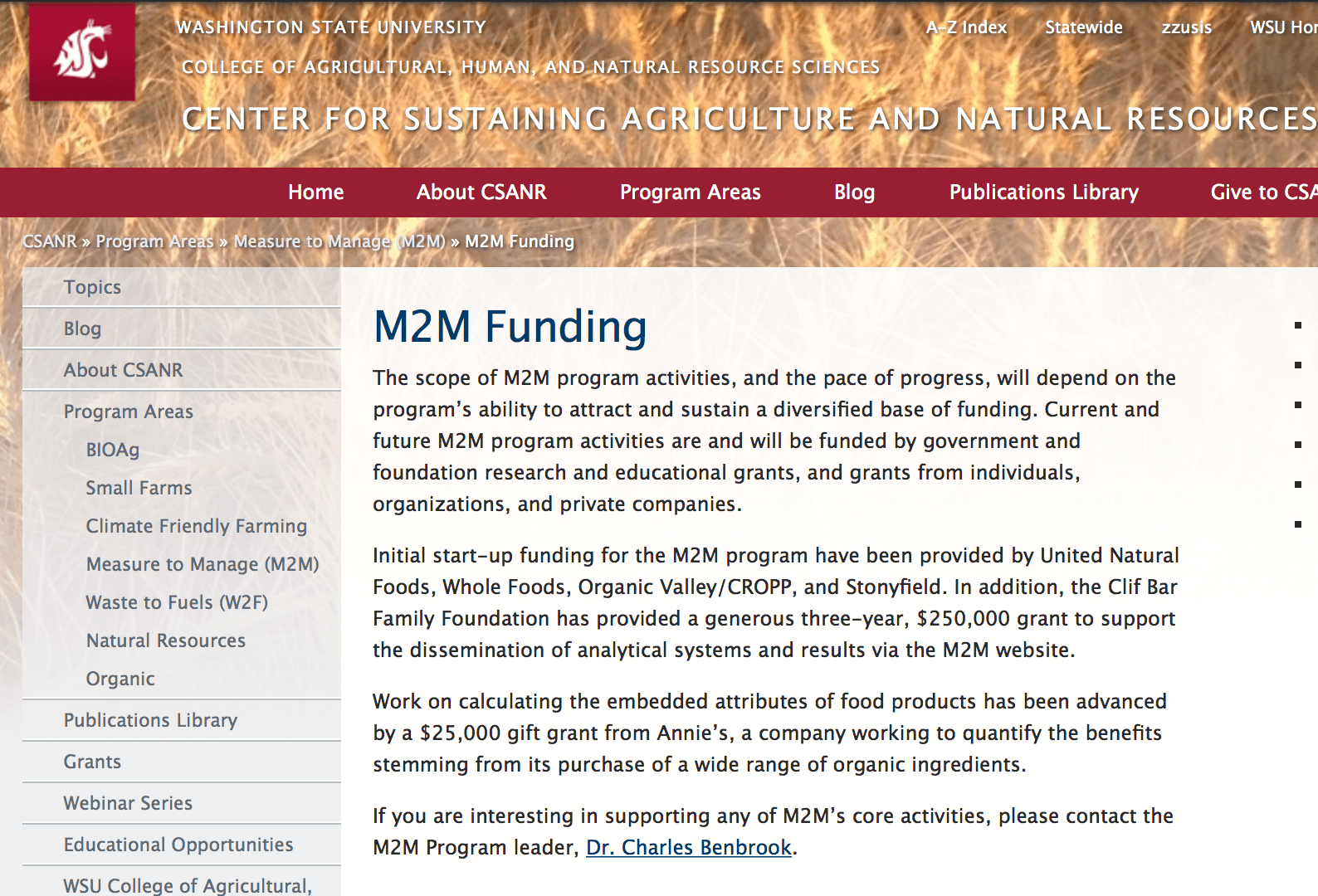
The M2M program was funded entirely by the organic industry with no funding support from any independent or university sources. According to the CSANR website, but since removed [but available here]
Initial start-up funding for the M2M program have been provided by United Natural Foods, Whole Foods, Organic Valley/CROPP, and Stonyfield. In addition, the Clif Bar Family Foundation has provided a generous three-year, $250,000 grant to support the dissemination of analytical systems and results via the M2M website.
Work on calculating the embedded attributes of food products has been advanced by a $25,000 gift grant from Annie’s, a company working to quantify the benefits stemming from its purchase of a wide range of organic ingredients.
Benbrook’s affiliations and publications all have a decidedly anti-biotechnology, pro-organic slant. In a 2009 interview with the Economist, Benbrook asked a series of questions he claims should be used to determine whether or not biotechnology enhanced crops can be seen as a component of sustainable agriculture. He stated “It is hard to get to “Yes”, biotech and sustainable agriculture go together, with one neutral and three “No” answers to the above questions.”
Education
Benbrook has a PhD in agricultural economics from the University of Wisconsin-Madison (1980( and an undergraduate degree from Harvard University (1971). BA, Economics, Harvard (1971).
From 2012-2015 he held an adjunct faculty position in the Crop and Soil Sciences Department, Washington State University at the Center for Sustainable Agriculture and Natural Resources (CSANR). While at WSU, h ran the M2M program within CSANR group. His responsibilities were two fold: To boost faculty cadre actively working on organic agriculture at WSU and to establish a peer reviewed research framework for evaluating sustainability metrics, a rapidly growing driver in the organic marketplace. Funding for Benbrook’s M2M program did not come from the University but was provided by a set of organic industry donors with the intent that Benbrook would establish a base from which he could compete for competitive funding–that his work would stand up to scientific review. In the three years, all funding for his salary and program came from direct industry support provided by United Natural Foods, Whole Foods, Organic Valley/CROPP, and Stonyfield. In addition, the Clif Bar Family Foundation and Annie’s Organic.[5]
Benbrook’s staff included Donald R. Davis, PhD (part time), a retired former academic with the University of Texas and research consultant at an alternative medical clinic in Kansas; he was also a frequent speaker at alternative health and organic conferences.[6] And, Nicholas Potter, MS, who works on “data visualization” for web settings on pesticide risks.[7]. Karie Knoke, BS, a former computer consultant for a hearing aid company and health and personal care worker promoting “off the grid”[8] yurt dwellings and natural living from Sand Point, Idaho (Benbrook’s former hometown), provides data entry and interpretation support.[9] Knote is a former fisherwoman from Alaska who has done pesticide research for Consumers Union and advocated for “energy healing, astrology and the primitive arts.”[10]
Benbrook’s center at WSU appeared to be “virtual” as neither he nor any of his listed staff near the campus. The official mailing address for M2M is Benbrook’s personal residence in Enterprise, Oregon more than 375 miles from the CSANR offices and University of Washington campus. Computer expert Knote lives “off the grid” near San Point Idaho (220 miles from M2M and 365 miles from WSU campus), data visualization staffer Nicholas Potter resides in Spokane (290 miles from campus and 165 miles from the listed M2M offices). And Davis resides near Austin, Texas (1,800-2,100 miles from the respective locations).[11]
Benbrook left in spring 2015 under cloudy circumstances. As of May of that year, his name was scrubbed from the “people” section of the CSANR website and no longer appears in any WSU offered course listings. After his mysterious departure from Washington State University, he formed a new consulting agency and testing service called Hygeia Analytics (www.hygeia-analytics.com).
The Organic Center (TOC)
Benbrook served as “chief scientist” for TOC from 2006-2012. TOC is an independent NGO funded mostly by the organic industry until 2011 when it formally merged with the Organic Trade Association, an . Benbrook led research to support organic agriculture via denigrating conventional agriculture, specifically developing research and public relations campaigns attacking the efficacy and safety of modern crop protection (pesticides) and plant biotechnology (GMOs).
Benbrook Consultant Services/AgBiotech-Info.net
Since 1990, Benbrook has served as a scientific and technical consultant to the organic food industry and organic-supporting advocacy groups. In this capacity he has also served as an expert witness for litigators (including The Center for Food Safety in pesticide and biotechnology-related cases suing the federal government and ag biotech companies. He also owned and ran the website and listserv Biotech Info Net (no longer active). Benbrook’s clients include national consumer and environmental groups, international organizations, companies, federal and state government agencies, trade associations, and academic research organizations.[15]
Benbrook Consulting still exists, but he has expanded into analytical reporting, testing services and lobbying support. He has worked with anti-GMO group US Right to Know, Robert F. Kennedy, Jr. and the Church of Scientology law firm formally known as Baum Hedlund. He contributed his services to campaigns to influence the European Parliament to ban glyphosate and ban the weedkiller dicamba in the US. He provided technical support to a Maharishi Movement-linked study claiming glyphosate causes Alzheimer’s disease.
Benbrook was a consultant to Whole Foods in guiding them to a 2014 launch of a “Responsibly Grown” ratings system. Under his guidance, Whole Foods determined what agro-chemicals it considered harmful or less harmful. Some organic products were rated as ‘harmful’ under this system and some non-organic produce treated with far harsher ‘natural’ chemicals, were listed as ‘best,’. It created a furor among organic purists and scientists alike, and was eventually abandoned.
National Research Council
From 1984 to 1990 Benbrook served as executive director for the Board of Agriculture at the NRC. Benbrook claims he left this position because of his opposition to his role in opposing the findings of a NRC study on children and pesticides, which he believed was too soft. However, according to a 1993 letter from National Academy of Sciences president Frank Press to Bill Moyers, Benbrook was asked to resign from this position following repeated violations of NAS guidelines regarding non-biased, non-partisan and professional science staff statements even before the child pesticide study was completed. Press wrote:
-
- The editing of the documentary will lead viewers to the erroneous conclusion that the employment of Charles Benbrook at the NAS-NRC was terminated as a result of his role as the director of the study on children and pesticides. This simply was not the case. The facts are that Mr. Benbrook was warned both orally and in writing on multiple ocassions, long before the Landrigan committee began writing its report, that his public comments in speeches, testimony, and in print, on studies already completed and on other matters were inappropriate to his role as a member of the NRC professional staff. Indeed, in a letter of warning that I wrote to Mr. Benbrook on November 14, 1989, I stated that “the NRC corporate entity must be non-partisan, and professional staff statements should reflect views that have resulted from our process of balanced committee analysis and careful review. Your actions… do not conform to that process and you have been frequently advised to be more careful.” Mr. Benbrook chose subsequently to ignore the specific guidance contained in the letter and, after yet another such incident regarding a public statement he made on an unrelated matter, he was asked to resign one year later, when the children and pesticides study still was in an early stage of development.[16]
U.S. House Agriculture Committee
From 1981 t0 1984 Benbrook served as a sub-committee staff person to U.S. House of Representatives George E. Brown and Congressman Jim Weaver of Oregon.
Office of the President, Council of Environmental Quality
From December 1979 to March 1981 Benbrook served as an agricultural policy analyst.[17]
Advocacy
Benbrook actively advocates that GMOs can cause known allergies or post other safety challenges and pesticides are unsafe, unjust and unsustainable. He claims organic farming is a safer, healthier and superior system. He collaborates with Consumers Union’s Michael Hansen on glyphsoate and chemical EDC advocacy [x]
Benbrook has participated in numerous organic industry advocacy initiatives, conferences and petition campaigns opposing GMOs. Environmental groups include the Center for Food Safety, Friends of the Earth, Environmental Working Group, US Right to Know, the Organic Consumers Association, and the Pesticide Action Network. Benbrook is a member of Bioneers and affiliated via his consulting with Consumers Union; other advocacy-consulting engagements include:
- Western Organization of Resource Councils, co-author and research source for anti-biotechnology publications
- Greenpeace – research consultant/source, event speaker for biotechnology related publications and events
- Center for Food Safety/Andrew Kimbrell – research consultant/ source for biotechnology related litigation and publications
- International Center for Technology Assessment/ Mark Ritchie – research consultant/ source for biotechnology related lobbying and publications
- Just Label It campaign (Organic Voices 501c4 lobbying arm of organic companies)
Sample Quotes
- “Biotechnology is not a system of farming. It reflects no specific philosophy nor is it guided by a set of principles or performance criteria. It is a bag of tools than can be used for good or evil, and lots in between.” The Economist, November 2009.
- “Clearly the biotech industry will ultimately be held responsible for negative impacts of their technology. It may take lawsuits or class action lawsuits. The system has to change; it is unjust and not sustainable,” The Organic & Non-GMO Report, February 2011.
- “There have been dramatic changes in the transgenic composition of GE corn and soybeans over the last five years, coupled with a substantial increase in reliance on pesticides and Bt toxins. Compared to the first five years of commercial use (1996-2000), today’s GE corn and soybeans in the U.S. require:
- About twice as much herbicide per acre, with glyphosate/Roundup accounting for essentially all the growth;
- In corn, two to six Bt toxins to deal with European corn borer and the corn rootworm complex;
- Delayed release, systemic seed treatments including at least two insecticides and two fungicides, one of which is a nicotinyl implicated in honey bee Colony Collapse Disorder;
- A return to corn soil insecticide use as a component of Bt-gene, resistance-management programs (eroding a portion of the reduction in insecticide use brought about by Bt corn);
- Significant and historically unprecedented increases in fungicide use on corn (11 percent of crop acres were treated in latest USDA pesticide use survey 2010, no more than 1 percent was treated previously); and
- Approval and commercial planting in the U.S. of the first GE crop that will be consumed in significant quantities by humans in a largely unprocessed form – Bt and RR sweetcorn.” Charles Benbrook – GE Crop Risk Assessment Challenges: An Overview, Food Safety News, 6 May 2013
Criticisms
- See “forced resignation” citation regarding Benbrook’s termination from the National Research Council at the NAS, noting, “Mr. Benbrook was warned both orally and in writing on multiple occassions that his public comments, in speeches, testimony and in prent on studies already completed and on other matters were inappropriate to his role as a member of the NRC professional staff.”
- Grass Fed Cows and Better Milk: Is Industry Funding a Bad Thing When it’s an Organic Corporation? by the American Council on Science and Health, March 2018. “One co-author, Dr. Chuck Benbrook, is an agricultural economist who was unceremoniously kicked out of the school where he was a glorified adjunct once his organic industry funding dried up. He is the poster child for industry shill. Benbrook has a bad habit of massaging study setup to achieve a goal rather than being prospective, and CROPP Cooperative funding his activism while at Washington State University where he literally offered to produce results for a fee.”
Regarding Benbrook’s 2012 report on GMO and pesticide impact use in the United States:
- Dr. Alan McHughen (UC Riverside) and researchers Graham Brookes and Janet Carpenter documented various “inaccurate claims”, “inaccuracies and biased assumptions” and “misleading use of official data.” They wrote Benbrook relied on his “own interpretations and assumptions” for over-estimating pesticide use on GMO crops while underestimating use on conventional and organic crops and that Benbrook produced no references from reputable science journal published research to support his allegations of human health risks from GMO Bt crops.[18]
- “The data on which Benbrook relied do not, in fact, support his conclusions. His work exemplifies the observation of biologist James F. Bonner, who once said about the research results of a competitor that did not agree with his own, “There are a thousand ways to do an experiment wrong.” Benbrook has found many of those ways, and his recent article serves as a case study of how to bend the data to support a preordained (and insupportable) conclusion.” and “While at his previous position at the U.S. Organic Center, which is ideologically and intractably (and irrationally) opposed to genetic engineering, Benbrook authored many other papers with similar claims about genetic engineering. None were published in reputable peer-reviewed journals and when independently assessed, they were invariably exposed as being misleading and inaccurate. From his new perch in academia, Benbrook has sought credibility by managing to get one of his ideological screeds into a peer-reviewed journal.” – Graham Brookes is an agricultural economist with the UK-based consultancy business PG Economics and author of 13 peer reviewed papers on the economic and environmental impact of genetically engineered crops. With, Henry I. Miller, a physician and molecular biologist, is the Robert Wesson Fellow in Scientific Philosophy and Public Policy at Stanford University’s Hoover Institution.[19]
Regarding Benbrook’s Organic Center (OC) 2009 reports on GMO, pesticide use and seed choice in the United States:
- PG Economics: “The OC’s assessment of the impact of biotech herbicide tolerant traits (HT) is disappointingly inaccurate, misleading and fails to acknowledge several of the benefits US farmers and citizens have derived from use of the technology… Its conclusions are highly dependent upon the assumptions used, and perceptions of the author, as to how seed markets work and farmers behave. We consider that the mainstream US market evidence does not support the OC report conclusions.” PG Economics briefing note 4 December 2009, “The Magnitude and impacts of the biotech and organic seed price premium: US Organic Center report assessment by PG Economics” & PG Economics Briefing note: 19 November 2009, “Impact of genetically engineered crops on pesticide use: US Organic Center report evaluation by PG Economics.[20]
Regarding Benbrook’s 2008 “Nutritional Superiority of Organic Foods” report:
- Joseph D. Rosen, professor emeritus Rutgers University’s School of Environmental and Biological Sciences, “My own review of the study, however, shows it to be riddled with flaws and its conclusions unsupported…My own review of this study showed it to be neither rigorous nor able to support the 25 percent “more nutritious” claim. The study suffers from numerous defects, such as inclusion of publications that were not peer-reviewed, studies where the differences in nutrient content between organic and conventional produce were not statistically significant, and publications with insufficient information for statistical analysis. In some cases the study failed to include results favorable to conventional farming while including data from organically grown food that is unavailable to consumers and/or inedible and thus arguably irrelevant.”[21]
Benbrook conflicts of interest while at the Organic Center:
- “Charles Benbrook is an employee of the Organic Center, so it should not be expected that he has no financial interest in the promotion of organic food sales. Industrial donors to the Organic Center with contributions of at least $50,000 include Aurora Organic Dairy, Horizon Organic, Organic Valley Cooperative, Silk Soy, Stonyfield Farm, White Wave, and Whole Foods Market. Individual donors of at least $50,000 include Walter Robb and John Mackey, co-presidents of Whole Foods; Eugene Kahn, a General Mills vice president and founder of their subsidiary, Cascadian Farm; Mark Retzloff, founder of Horizon Dairies; and Steve Demos, president of combined operations for White Wave, Horizon Organics, and Dean Foods.”[22]
Bibliography
Sample Advocacy Reports:
- 2008 Report (3.7m pdf) Impacts of Genetically Engineered Crops on Pesticide Use: The First Thirteen Years
- 2004 Report (2.8m pdf) Genetically Engineered Crops and Pesticide Use in the United States: The First Nine Years
- 2003 Report (869k pdf) Impacts of Genetically Engineered Crops on Pesticide Use in the United States: The First Eight Years
- 2001 Report (457k pdf) Factors Shaping Trends in Corn Herbicide Use (Including Impact of Herbicide-Tolerant Corn on Herbicide Use)
- 2001 Report (458k pdf) Troubled Times Amid Commercial Success for Roundup Ready Soybeans – Glyphosate Efficacy is Slipping and Unstable Transgene Expression Erodes Plant Defenses and Yields (Executive Summary)
- 1999 Report (280k pdf) Evidence of the Magnitude and Consequences of the Roundup Ready Soybean Yield Drag from University-Based Varietal Trials in 1998
Peer Reviewed Papers and Contributions:
- Benbrook, C. Impacts of genetically engineered crops on pesticide use in the U.S. – the first sixteen years, Env. Science Europe, accepted. Forthcoming 2012.
- Benbrook, C. et al. Methodologic flaws in selecting studies and comparing nutrient concventrations led Dangour et al to miss the emerging forest amid the trees, Am. Jour. Clinical Nutrition, Vol. 90(6): 1700-1. 2009.
- Benbrook, C. and C. McCullum-Gomez. Organic vs Conventional Farming, Jour. Amer. Dietetic Assoc., Vol 109(5): 809-811. 2009
- Benbrook, C. The Impacts of Yield on Nutritional Quality: Lessons from Organic Farming, HortScience, (2007).
- Benbrook, C. et al. Use of ‘resistance risk profiles’ to guide resistance management planning, Pesticide Outlook, Royal Society of Chemistry, 14:3, June 2003.
- McCullum, C., C.M. Benbrook, L. Knowles, S. Roberts, & T. Schryver. Application of Modern Biotechnology to Food and Agriculture: Food Systems Perspective, J. Nutr. Educ Behav., (2003); 35:319.
- Baker, B. P., C.M. Benbrook, E. Groth, and K.L. Benbrook. Pesticide residues in conventional, integrated pest management (IPM)-grown and organic foods: insights from three US data sets. Food Addit.Contam Vol 19(5): 427-46. 2002.
- Benbrook, C. M. et al. Developing a pesticide risk assessment tool to monitor progress in reducing reliance on high-risk pesticides. American Journal of Potato Research, 79 (2002): 183-99.
- Benbrook, C. M. Organochlorine residues pose surprisingly high dietary risks. J Epidemiol Community Health 56.11 (2002): 822-23.
- Benbrook, C. Do GM Crops Mean Less Pesticide Use?, Pesticide Outlook, Royal Society of Chemistry, October 2001.
- Nigh, R., Benbrook, C., Brush, S., Garcia-Barrios, L., Ortega-Paczka, R., Perales, H.R. Transgenic crops: a cautionary tale, Science, Vol. 287 (5460), 2000. Page 1927.
- Benbrook, C. Apples, Kids and Core Science, Choices, Third Quarter 2000, Am. Ag. Econ. Assoc. 2000.
- Lynch, S., D. Sexson, C.M. Benbrook, M. Carter, J. Wyman, P. Nowak, J. Barzen, S. Diercks, & J. Wallendal. Working out the Bugs, Choices, Third Quarter 2000, Am. Ag. Econ. Assoc. 2000.
- Benbrook, C. Why A Leopold Center for Sustainable Agriculture?, February 6, 1990. Jan-Feb. 1991 issue of the Journal of Soil and Water Conservation.
- Benbrook, C. Appendix B, Private Sector Research Activities and Prospects, in Investing in Research: A Proposal to Strengthen the Agricultural, Food, and Environmental System, NAS Press, 1989.
- Benbrook, C. Is American Environmental Policy Ready for de Minimis Risks in Water?, Regulatory Toxicology and Pharmacology 8, pp. 300‑307 (1988).
- Benbrook, C., and P. Moses. Engineering Crops to Resist Herbicides, Technology Review, MIT Press, November‑December 1986, pp. 55‑61, 79.
- Benbrook, C. First Principles: The Definition of Highly Erodible Land and Tolerable Soil Loss, Journal of Soil and Water Conservation, January‑February 1988, pp. 35‑38.
- Benbrook, C. The Science and Art of Conservation Policy, Journal of Soil and Water Conservation, September‑October 1986, pp. 285‑291.
- Benbrook, C., and W. Brown. Public Policies and Institutions to Enhance Crop Productivity, Crop Productivity Research Imperatives Revisited, proceedings of the Crop Productivity Revisited Conference, December 11‑13, 1985, Airlie, Virginia, pp. 239‑257.
- Benbrook, C. Carcinogen Policy at EPA, Letter to Editor, Science, Vol 219, page 798. 1983.
Affiliations
- Robyn O’Brien, Allergy Kids Foundation[23]
Personal
- Contact information: Enterprise, Oregon; Phone: (541) 828-7918; email: [email protected]
- Hobbies: Fishing, raising rabbits, photography
References
- 1 http://www.expertwitnessprofiler.com/Charles+Benbrook/50095
- 2 http://csanr.wsu.edu/people/chuck-benbrook/
- 3 http://uk.reuters.com/article/2012/10/02/us-usa-study-pesticides-idUKBRE89100X20121002
- 4 A research professor is one who does not take on all of the classic duties of a professor, but instead focuses on research. At most universities, research professors are not eligible for tenure and must fund their salary entirely through outside research grants, with no regular salary commitment from internal university sources. In parallel with tenure-track faculty ranks, there are assistant and associate research professor positions.
- 5 http://csanr.wsu.edu/program-areas/m2m/m2m-funding/
- 6 http://conferences.westonaprice.org/main-conference-2013/2013-speakers/
- 7 https://www.linkedin.com/in/potterzot
- 8 http://www.marketplace.org/topics/sustainability/cancun-climate-10/what-individuals-cities-are-doing-about-climate-change
- 9 http://www.innerpathworks.com/ipwstaff.htm
- 10 http://www.arizonachoices.com/saturday_ws.html
- 11 http://www.gmoseralini.org/donald-r-davis-usa/
- 12 http://cahnrs.wsu.edu/news-release/2009/08/24/national-organic-center-supports-wsu-research/
- 13 http://www.pacificfoods.com/about-pages/faqs
- 14 http://www.seattletimes.com/seattle-news/alumni-give-5m-to-wsu-organic-farm/
- 15 http://csanr.wsu.edu/wp-content/uploads/2014/04/Benbrook_WSU_RESUME.pdf
- 16 NAS Bill Moyers Letter, by Frank Press, National Academy of Sciences, March 15, 1993.
- 17 http://www.tfrec.wsu.edu/pdfs/P2572.pdf
- 18 A review and assessment of ‘Impact of genetically engineered crops on pesticide use in the US – the first sixteen years: Benbrook C (2012)’, Environmental Sciences Europe vol 24: 24 (September 2012) by Graham Brookes, PG Economics, UK, Janet Carpenter, J E Carpenter Consulting LLC, Dr Alan McHughen, University of California, Riverside
- 19 http://www.forbes.com/sites/henrymiller/2013/02/13/anti-technology-bias-a-case-study/
- 20 PG Economics Report PDFs
- 21 http://news.heartland.org/newspaper-article/2008/11/01/organic-food-study-flawed-conclusions-unsupported-science
- 22 A Review of the Nutrition Claims Made by Proponents of Organic Food, by Joseph D. Rosen, J. Comprehensive Reviews in Food Science and Food Safety, Volume 9, Issue 3, May 2010.
- 23 http://freevideoclip.org/watch=5VsunhakFWM_robyn-obrien-and-chuck-benbrook-webinar-gmos-your-health.html
 Studies in mice have pinpointed a cluster of cells called AgRP neurons near the underside of the brain that may create this unpleasant hungry, even “hangry,” feeling. They sit near the brain’s blood supply, giving them access to hormones arriving from the stomach and fat tissue that indicate energy levels. When energy is low, they act on a variety of other brain areas to promote feeding.
Studies in mice have pinpointed a cluster of cells called AgRP neurons near the underside of the brain that may create this unpleasant hungry, even “hangry,” feeling. They sit near the brain’s blood supply, giving them access to hormones arriving from the stomach and fat tissue that indicate energy levels. When energy is low, they act on a variety of other brain areas to promote feeding.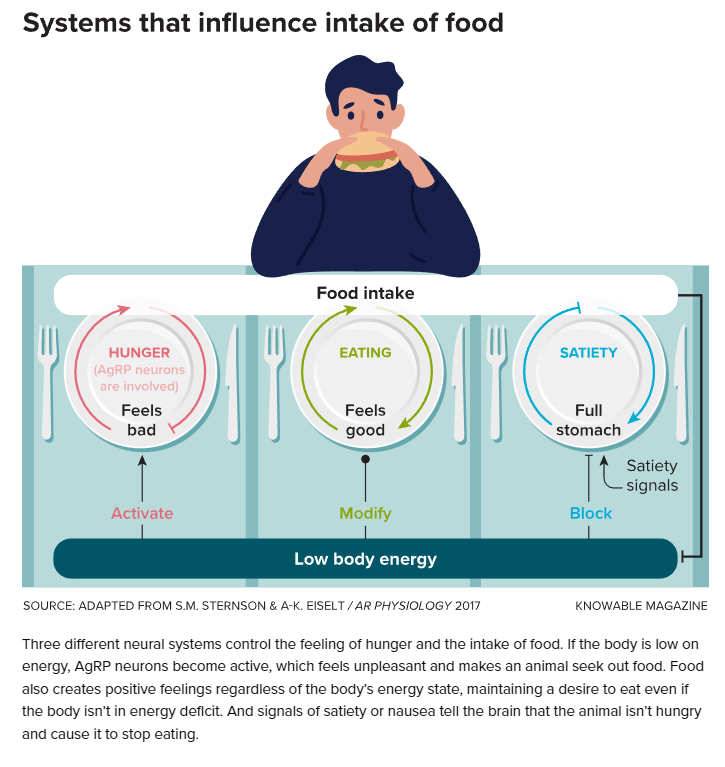
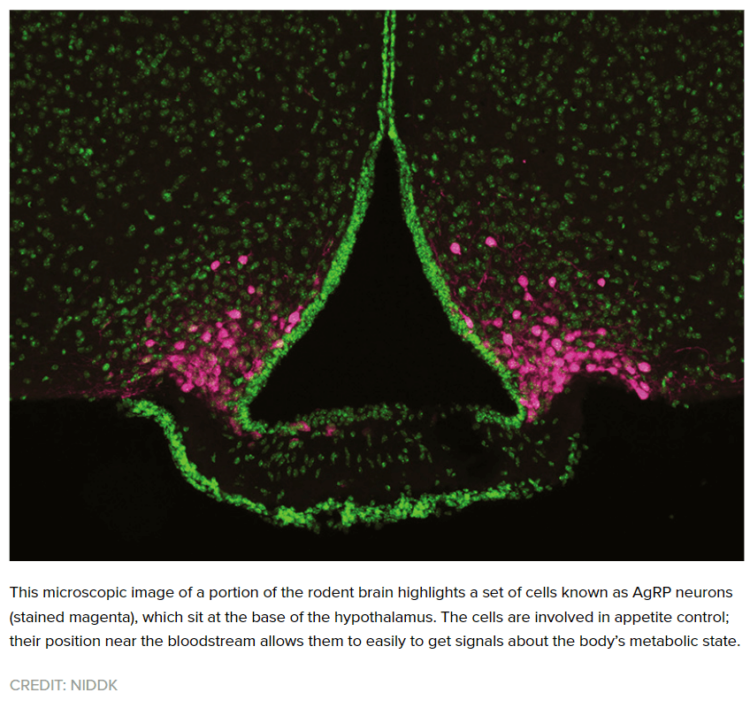






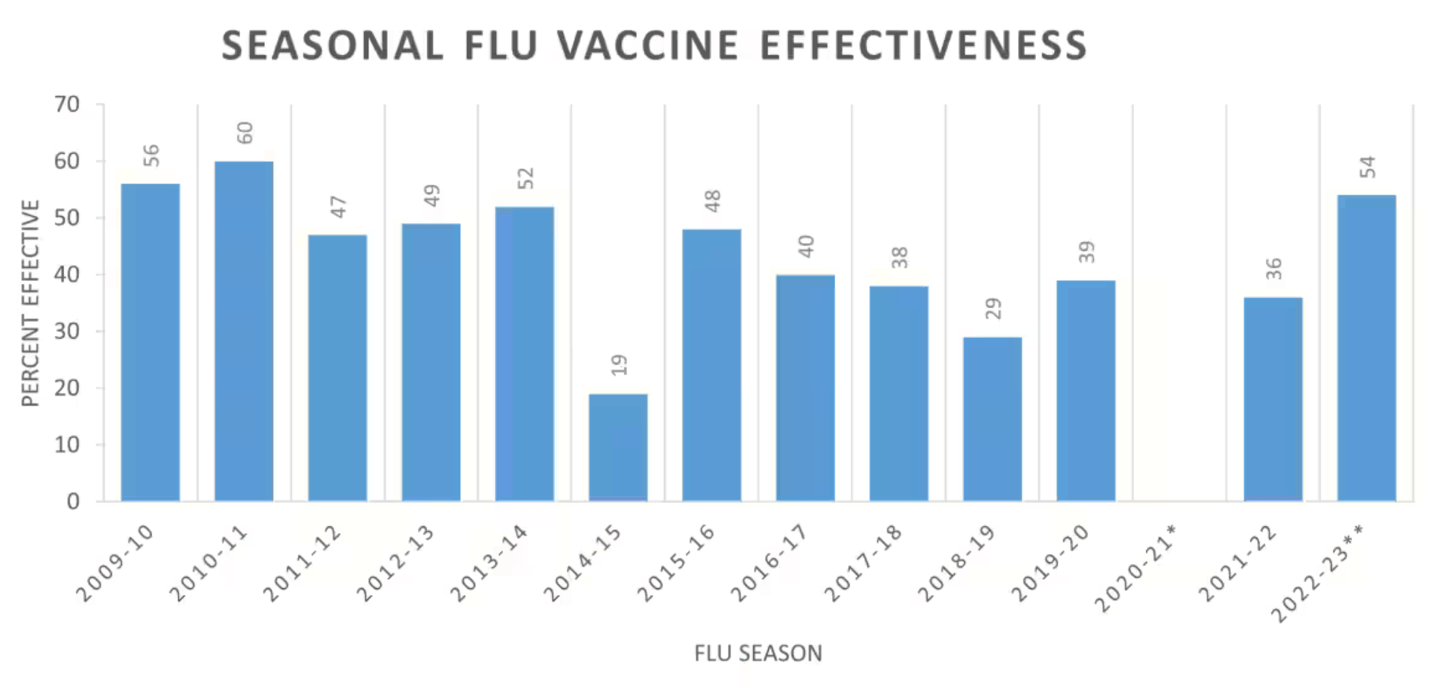


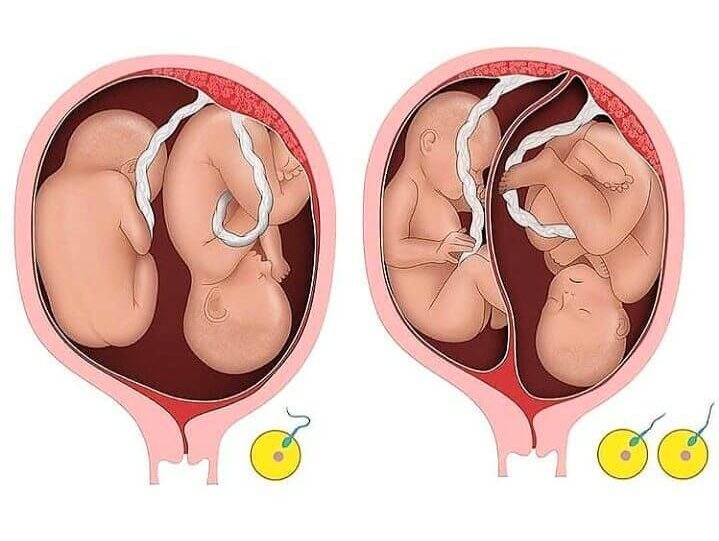

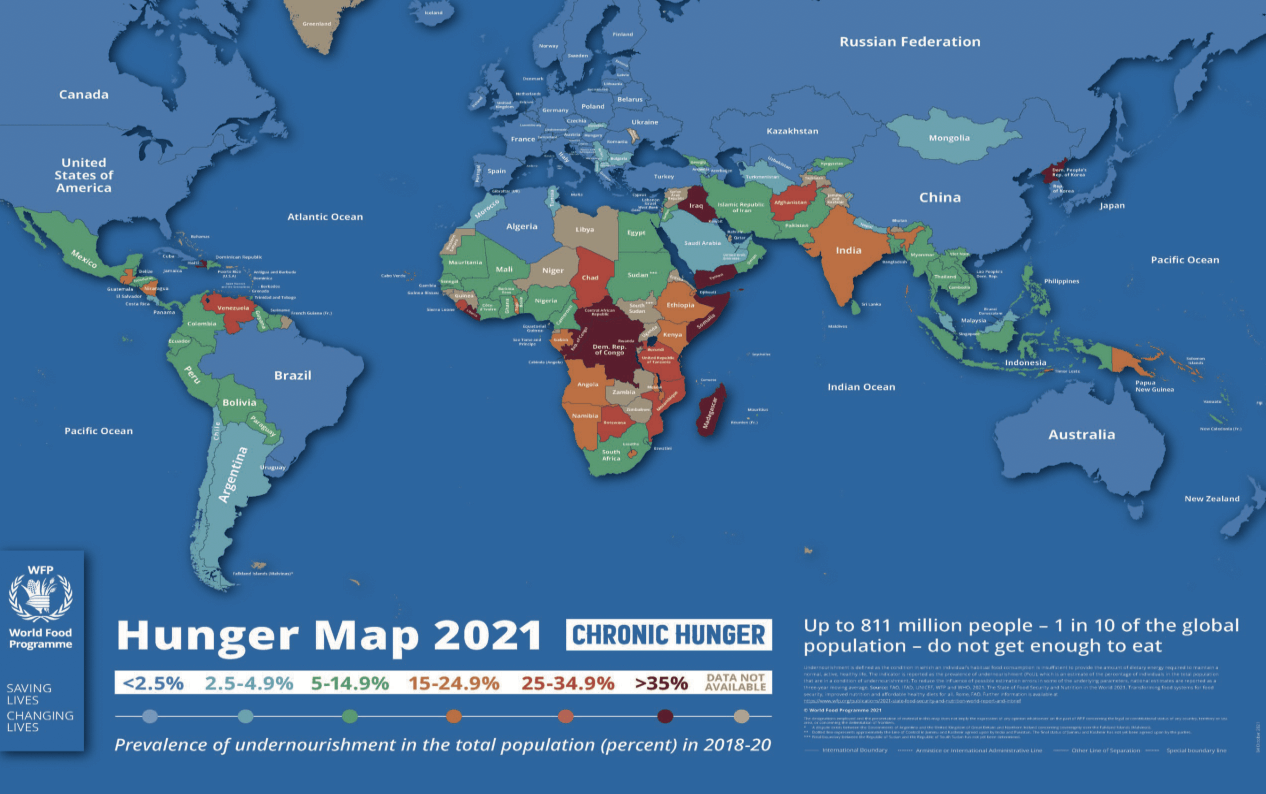


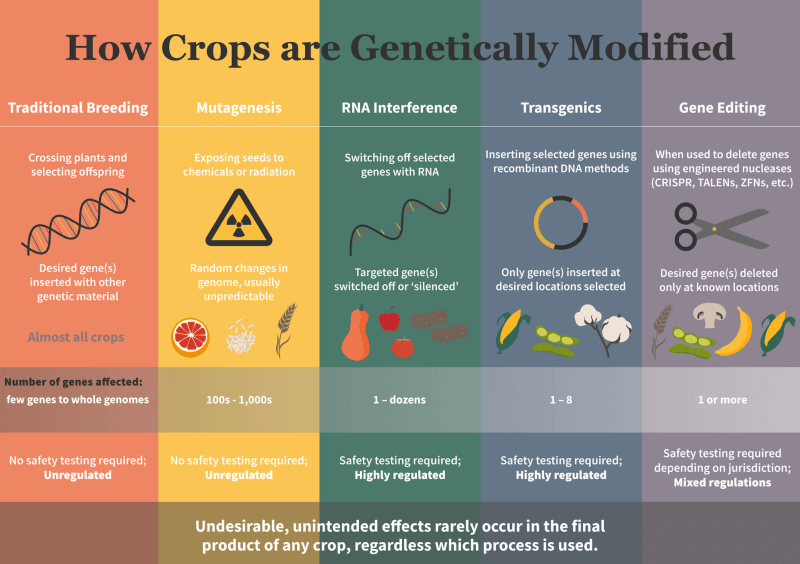








 In addition to funding HHRA, Benbrook and his family reported receiving more than $500,000 in fees from mass tort lawyers while coordinating these studies.
In addition to funding HHRA, Benbrook and his family reported receiving more than $500,000 in fees from mass tort lawyers while coordinating these studies.


